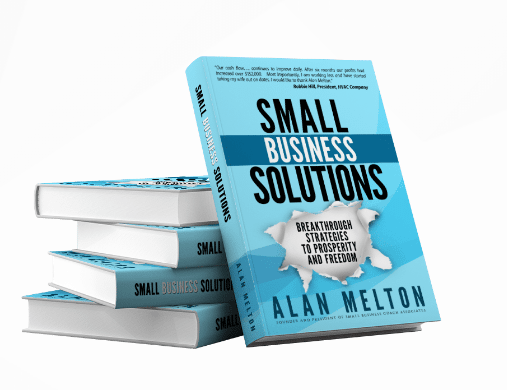VIEW BY TOPIC
- Finding Customers
- Business Systems
- Managing Employees
- Leadership
- Managing Money
Related Posts

Ready to Grow Your Business Fast?
Here’s How I Grew Five Businesses, and Eventually Sold One to a Fortune 500 Company.

IoT Software Development – How it Impacts Standard Development
One of the most essential and prospective technologies in the world is the Internet of Things (IoT). It offers almost limitless possibilities and the brightest prospects for the future. This technology is already omnipresent, from high-tech healthcare to smart washing machines and lightbulbs. Every industry can benefit from using IoT powers and wants it.
IoT solutions become more demanded each day. However, the question arises: are IoT software the same as “usual” applications for mobile and desktop computers? Can you simply order IoT software development services from the same company, like this, that created other software for your business? Of course, that company should provide such services. But still, we need to go deeper into the question.
What we can claim now, the Internet of Things impacts software design and development principles. There are specific combinations of software and hardware applicable to IoT solutions development. Besides, certain challenges were always present in the creation of any highly-productive software. However, the Internet of Things made the developers focus on those challenges.
How do IoT applications differ from other software?

The most burning challenge that any IoT software development company has to face when working on such projects is the “dual” scope of applications. The usual software you run on your desktop computer or mobile devices deals with digital environments. At the same time, the software for IoT touches the “real” world and controls physical objects there.
This factor implements additional complication levels at every stage of the software development process. First, the apps must receive and process data from multiple physical sensors. Then, IoT solutions have to operate an excessive number of connections.
Another high-priority task is ensuring the security of that data and connections. IoT application development services create tools to run factories, drive cars, and perform complex and requiring tasks in various industries. Thus, losing control of such processes or letting the slightest threat come in must not happen.
The Internet of Things networks include dozens and hundreds of various physical devices with different OS. The more servers participate in the communication processes, the faster the data gets processed. Then, to monitor and control these networks, users apply mobile apps on devices running on Android or iOS platforms.
Here, we have the specific factors that are in the highest demand for IoT software development efforts:
- Collecting data from external sensors;
- Managing multiple connections;
- Managing devices and applications on different platforms simultaneously;
- Ensuring the highest security level for operations and data;
- Decentralization.
One might say that these factors are essential for any complex and powerful solution. It is true, but the Internet of Things considers these aspects critical.
Development platforms and programming languages for IoT applications
IoT projects are complex. The software to deploy is only a part of the task. Developers have to track physical devices and sensors, capture the data they send, process it, and perform lots of other routines. Also, such projects require using programming languages suitable for IoT solutions. Fortunately, all these conditions are now available.
Development platforms
The combination of the development infrastructure, tools, and cloud technologies is provided by the tech industry leaders. It is a platform for IoT software development that helps to resolve all the specific challenges. Creators can deploy IoT apps and run them on cloud environments, covering all aspects, from mobile apps to the data exchange processes between all devices in the network.
IBM, Microsoft, Amazon, and other tech giants have introduced such platforms with different characteristics. Thus, the IoT application developer should only examine them and choose the optimal environment.
Let us name a few platforms serving excellent developers:
- Azure (Microsoft) needs no additional introduction – it is a tech giant with multiple products for developers. The Azure cloud platform is great for IoT projects – it provides all the features for data collection, visualization, analysis, and project scaling.
- AWS (Amazon). AWS is the developers’ favorite when it comes to IoT development services – it provides all the necessary tools for creating software and guarantees high security and scalability. Another essential option is an AI integration for better analytics services and control.
- Watson (IBM). IBM offers this platform as a great match for IoT software development. It has all the powers, ensures quick implementation of all features, and provides data analysis and risk management options.
IoT developers mostly tend to either Azure or AWS cloud environments. However, this area is attractive to all tech giants.
Programming languages

Projects in the Internet of Things demand clear and concise code that is easy to compile. This requirement determines the top-3 of programming languages for IoT solutions:
- Python is a great choice for creating and handling data-heavy applications.
- Java is the mobile developers’ favorite, suitable for IoT devices.
- C and C++ can work with both hardware and software.
Due to the great demand for solutions in the Internet of Things, working environments and tools are constantly improved and enhanced.
The IoT software development architecture
Here, we come to the significant differences in the processes of software development for IoT projects vs “traditional” software.
The architecture of the IoT software has four essential stages:
- Sensors – collecting data from objects and the environment with sensors.
- Preprocessing of the data – converting raw analog data from sensors to the required digital format.
- IT systems – analyzing collected and converted data to pass only meaningful results to the cloud.
- The cloud – extracting significant data and storing it in the cloud/traditional data centers.
When all the necessary data from the external sensors is processed and analyzed, IT experts can use it in the software solutions they create for the end users.
Note: The data exchange is tremendous in IoT applications. That’s why the tasks of improving and securing connections between the units in a network are the most crucial for developers. You can follow this link to find out more about Software Development
Conclusion
There is no doubt that the demand for new solutions to the Internet of Things technology will grow. More likely, the software development services will get much more contracts. All users understand the prospects that IoT opens, and most of the future solutions, both smaller and large enterprise systems will implement the technology.














